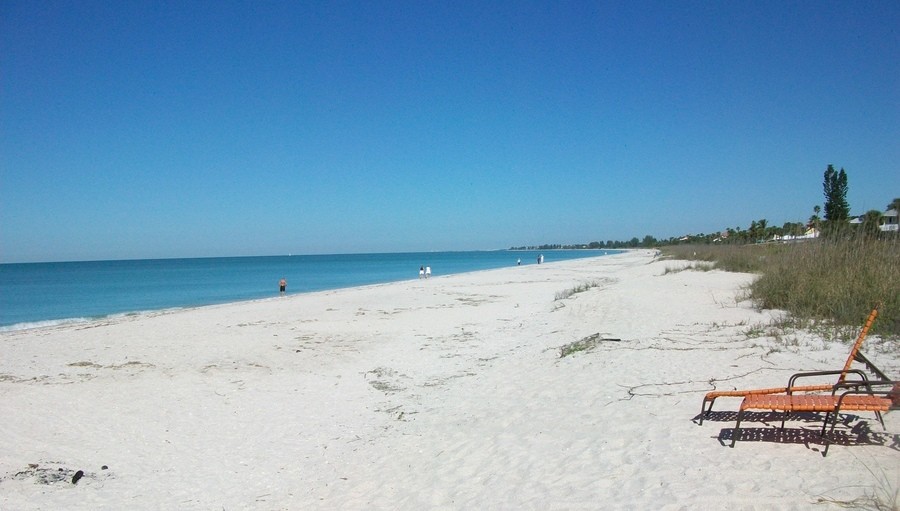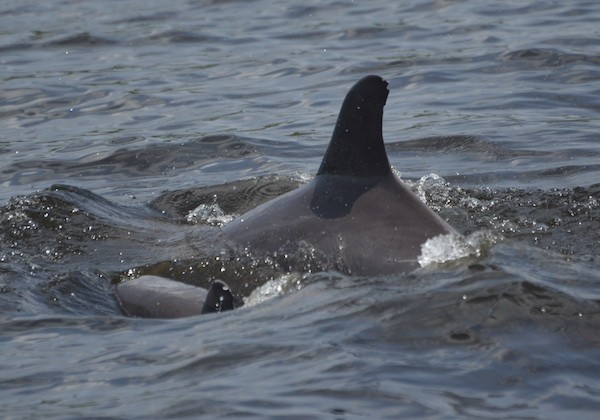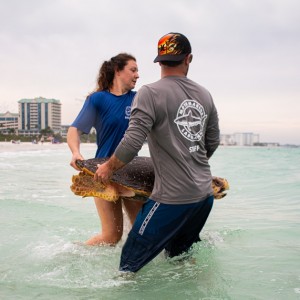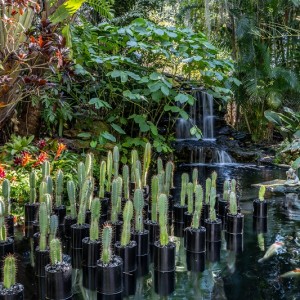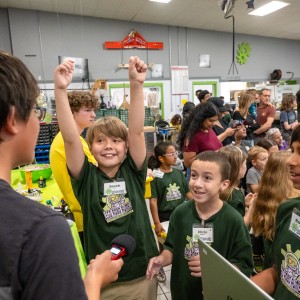Dolphin Births Mark Record Year in Bay
Todays News
SRQ DAILY FRESHLY SQUEEZED CONTENT EVERY MORNING
THURSDAY AUG 10, 2017 |
BY JACOB OGLES
Pictured: New mom Nellie in Sarasota Bay with calf. Photo by the Chicago Zoological Society's Sarasota Dolphin Research Program, taken under National Marine Fisheries Service Scientific Research Permit No. 20455.
A surge in baby dolphin births in Sarasota Bay makes 2017 a record year for calves in the population, according to scientists at Mote Marine Laboratory.
Randall Wells, director of a Chicago Zoological Society research project headquartered at Mote Marine Laboratory, says his team spotted an 18th and 19th new calf in Sarasota Bay this week. That’s a record over the 47 years that the team at Mote has tracked the local population. In July, scientists announced exciting news when the dolphin Ginger, who in 2008 had been rescued and rehabilitated at Mote following injuries and a case of bronchopneumonia, was spotted with a calf at her side. When scientists spotted Ginger and her baby about a week ago, they also found another dolphin, Nellie, had a calf herself. Earlier this week, researchers reported two more babies.
Both Nellie and Ginger at some point were rescued, and the expansion of the dolphin population validated rehab efforts at the Sarasota scientific institution, Wells says. “The rescue effort doesn’t save just one animal,” he says, “but leverages additional animals down the road.”
The program, founded in 1970, enjoys prestige as the longest-running study of a wild dolphin population anywhere in the world. The big year in baby births will provide additional data to scientists about the behavior of dolphins, according to Wells. Scientists have found that mother dolphins have a greater success rate at raising calved to adulthood after the birth of a second offspring. Ginger notably had a first calf a coulee years ago but the younger dolphin disappeared and was never found; researchers believe this new calf is her second, and they remain optimistic about its survival chances. “We have greater expectations for the second calf for mammals,” Wells says.
Over the course of a lifetime, Wells says some female dolphins have produced as many as 10 offspring. “The real message is these animals are exposed to a lot of things that can do them harm,” Wells says. “We need to do the best we can to protect dolphins from unnatural losses.”
Pictured: New mom Nellie in Sarasota Bay with calf. Photo by the Chicago Zoological Society's Sarasota Dolphin Research Program, taken under National Marine Fisheries Service Scientific Research Permit No. 20455.
« View The Thursday Aug 10, 2017 SRQ Daily Edition
« Back To SRQ Daily Archive





